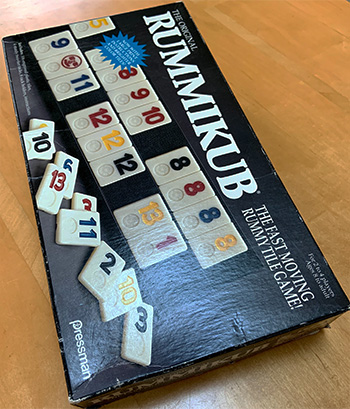
When
Wednesday, September 18, 2024 at 3:00pm
Where
Walter Reed Recreation Center
2909 16th Street S
Arlington, VA 22204
Event Director
Riley Geary
Contact Riley by email.
Volunteers
See our volunteers page for details.
Results and Records
Results and Records for the NVSO 2023 Rummikub Event.
Photographs
There are no photographs from the NVSO 2023 Rummikub Event.
Rules
General Rules
Please go here for rules covering all NVSO events.
Rummikub
For the NVSO's rules regarding Rummikub, go to the Index of the General Rules to find the specific page referenced.
